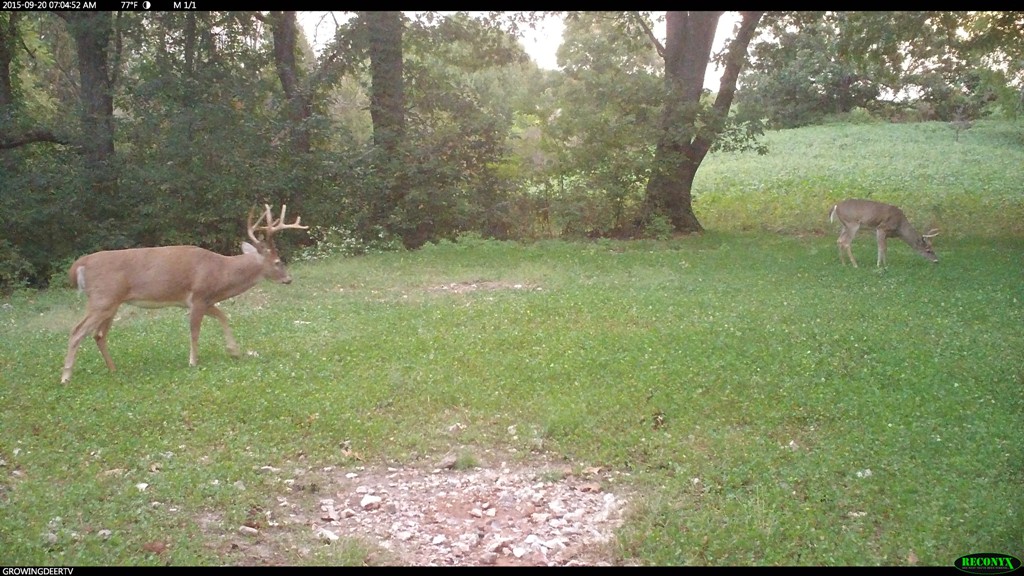How To Hunt Staging Areas
Filed under: Hunting Blog, Hunting Tactics
Staging areas are some of my favorite stand locations! I hunt most often at The Proving Grounds, in the Ozark Mountains of southern Missouri. The area is primarily timbered with few natural openings. In this type of habitat deer, including mature bucks, seem to readily use small openings before larger food plots, etc.
I’ve created several staging areas by clearing brush and trees. Some of these are simply nooks off larger food plots and some are 100 to 200 yards away from a primary feeding area. I often place Trophy Rock’s Four65 mineral in the staging area as well as maintain it in Eagle Seeds’ Broadside blend. I almost always create a mock scrape in the staging area also! This combination of mineral, forage that is attractive during the hunting season, and a mock scrape has proven extremely effective at attracting mature bucks during daylight hours.

This is a buck we call King using a staging area before entering a large food plot.
It’s very important to find or create staging areas that allow hunters to approach without alerting deer. This means the approach, hunt, and exit need to occur so that deer in the local bedding and feeding areas won’t be downwind of the stand/blind location. This characteristic of staging areas is probably the most important determinant of its location!
Staging areas give hunters a big advantage that’s rarely discussed. Because staging areas are usually between primary bedding and feeding areas, it means deer are traveling through them. This means hunters can often approach staging areas before a morning hunt and/or leave them after an evening hunt without alerting deer. This is in contrast to hunting both bedding and feeding areas where it’s often difficult to approach during the morning or leave after a hunt without alerting deer. Therefore staging areas can often be hunted more frequently without “burning out” the stand.
I’ll be hunting staging areas this fall! Whether you find a natural staging area or establish one I hope you have an opportunity to hunt these great habitat features also!
Growing Deer together,
Grant



